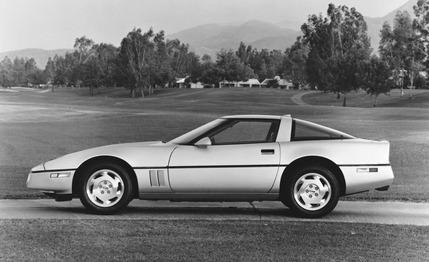 Road Test
Road Test
We at Car and Driver don't need a lot of encouragement to road-test a Corvette. As America's highest-performance production car and one of the world's great supercar bargains, the Corvette is a constant topic of discussion in our office. Which is not to say that the discussions are always friendly. The arguments between staff members who are smitten with the Corvette's speed and those who are discouraged by its deficiencies never stop.
Chevrolet has fueled the debate by continually honing, tuning, and otherwise improving the current-generation Corvette, which first appeared as a 1984 model. The 1985 version introduced a port fuel-injection system, which increased the engine's power and responsiveness, and a thoroughly recalibrated suspension, which largely tamed the car's buckboard ride. A lovely convertible edition and standard-equipment Bosch anti-lock brakes were the highlights of the 1986 lineup. Last year's crop of improvements included the Z52 suspension package, which spanned the gap between the base calibration and the Z51 competition setup, and aluminum cylinder heads, which reduced weight and helped add ten horsepower to the engine's power rating.
The 1988 Corvette continues the tradition of annual progress. This year's news includes revised front and rear suspension geometry, bigger brakes, yet another engine upgrade, and optional seventeen-inch wheels and tires. There are a host of minor changes as well: a quieter and lighter air-conditioning compressor, an improved ventilation system, and the addition to the standard-equipment list of power locks, cruise control, and an AM/FM/cassette stereo system.
Of the running-gear changes, the most obvious are the larger wheels and tires, which are standard with the racetrack-oriented Z51 package or the similar Z52 street setup. Except for such boutique machines as the Porsche 959 and the Lamborghini LM002, the 1988 Corvette is the first car in modern times to be outfitted with seventeen-inch wheels and tires. The tires are 275/40ZR-17 Goodyear Eagles — a wider, lower-profile development of the 255/50ZR-16 gatorbacks that are still fitted to the base car.
Surprisingly, the racy-looking rubber does not — and was not intended to — improve the Corvette's absolute cornering power. But the Corvette had plenty of grip already. Our Z52-equipped test car circled the skidpad at 0.87 g, a performance identical to that of the Z52 we tested last June, and as high as that of any production car we've ever tested. Corvette and Goodyear engineers developed the new tires not to increase the ultimate grip but to improve controllability at the limit and performance on wet pavement.
Sure enough, the 1988 Corvette with the Z52 option — a bargain at $970 — handles more benignly than any other Corvette we've ever driven. The chassis's moderate understeer and the tires' gradual breakaway encourage flirting with the Corvette's outstanding cornering limits. You can slide all four tires a bit, or flick the tail out with a touch of throttle if you prefer. You can play Mario Andretti all day long without fearing that the chassis will snap into oversteer the first time you make a little mistake.
And when the weather turns against you, the Corvette won't. Despite their steamroller width, the new Goodyears work amazingly well in the wet. Not only is their wet grip impressive, but they resist aquaplaning at any sensible speed. The new rubber even works well in the snow. You'll never mistake the Z52 Corvette for a Jeep, but neither will a three-inch snowfall transform your drive to work into a nonstop skid-control session. In fact, the biggest problem with driving a Corvette in the snow is its sensitive throttle linkage, which translates the first tiny increment of pedal movement into a sizable fraction of the engine's generous torque. An overaggressive throttle is usually intended to create the impression that a car has more power than it really has. The Corvette requires no such fakery.